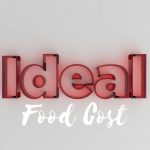How to Find Your Actual Food Cost
Actual food cost is an important number to know because it’s one of the numbers you need to know to find your target food cost. In the most basic terms, food cost represents how much food left your shelves divided by the amount of gross food sales you did for that period, before discounts are removed and not including sales taxes.
Let me be perfectly clear, food cost is not food purchased divided by food sales. You MUST inventory ALL of your food products for value – both products you purchase and products you produce – to know your food cost. This is because you might have purchased more than you used one period, which makes your food cost look higher that it really is, or you might have purchased less, but used products you had on the shelves so your food cost looks lower than it really is.
To know your actual food cost, you will need to use the following equation:
Beginning inventory plus purchases will give you your total food available to sell. Total available minus ending inventory will give you the dollar value of the products that left the shelves, which is called use. Next, use divided by sales to give you your food cost percentage. To understand this simple equation better, here’s where each of those numbers come from.
- Beginning inventory refers to the total dollar value of all of the inventoried items on the shelves, from the end of the last period, i.e., all food items for the food cost calculation.
- Purchases are any and all invoices for items that came into the building during that period, whether paid for or not. It is imperative that you follow an accrual accounting format when logging in purchases. This way you show an accurate accounting of what product actually entered the building during that period. Since you carry inventory, the IRS will require your tax returns to be done in an accrual basis even if you run your books on a cash accounting basis, so there is no benefit to doing your books on a cash basis. A simple way to look at accrual accounting is earn, owe and use.
- If you earn it (sales) you are required to account for it.
- If you receive products, paid for or not, it’s an expense that day (owe).
- And if you use it (product that leaves the shelves), an inventory adjustment up or down in the expense account for that category is made, i.e., if you used $500 more in food than you purchased for that period, then you would reduce the inventory figure on the balance sheet and increase the expense on the profit and loss statement, which increases your cost of goods sold for that period.
- Total available refers to the total amount of product by category that you could have sold in a given period, beginning inventory plus purchases. For example, if there was $5,000 of product on the shelves when you opened for business on the first day of the period and you took $10,000 in deliveries through the last day of the period, but did not open your doors for business at all that period, you would have $15,000 of product on your shelves you could have sold.
- Ending inventory refers to the total dollar value of all the inventoried items after the close of the last day in that period or before you open for the first day of the next period. No matter when you count, the inventory is dated that last day of the period.
- Product used represents exactly that: the dollar amount of the entire amount of product used in any given period, total available minus ending inventory. “Use” literally refers to product used and can be categorized in four ways.
- Waste or spoilage – if your staff is burning food and it gets thrown away, or if your staff is giving a larger portion than the recipe calls for, or if your refrigeration unit goes down and nobody caught it and you had to throw away product, it is still considered use. (Please make a special note that all of the causes for waste are avoidable and are a direct result of a lack of management and training.)
- Theft – if your staff takes food home in their knapsack, if they give friends free food that is not authorized, this is also considered use. Again, having controls in place, along with diligent management, can reduce theft to almost nothing, but just understand that some people will steal.
- Comps not rung up in the POS – this strictly refers to all comps that are not rung up on the point of sale system or cash registers. This might be an owner walking into the kitchen and taking steaks home for a barbeque. This is considered use because the product has been used, even though no sale has been rung up. (Please note, I don’t have a problem with this practice. Just make sure it goes on a waste sheet so management can account for why food cost is off and not be blamed for it.)
- Sales – the reason you hope your entire product inventory gets used because it means the only reason product left your shelves was to bring in money.
- Sales are, as described earlier, to be shown by category for a given period. Again, sales represent the dollars brought in for the entire product that left your shelves for that period.
- Cost of goods sold percentage – use divided by sales – represents a penny of product for every dollar you brought in in sales. For example, a 32 percent food cost means for every dollar in food sales you brought in, .32 cents of product left your shelves.
That’s how you get your restaurant’s actual food cost.
If you would like to learn more about actual food cost and why you need to know it for your restaurant, read our free special report, Breaking Away from the Insanity: How to easily take control of your restaurant and make more money. Download it here. Be sure to visit our YouTube channel for more helpful restaurant management video tips.





